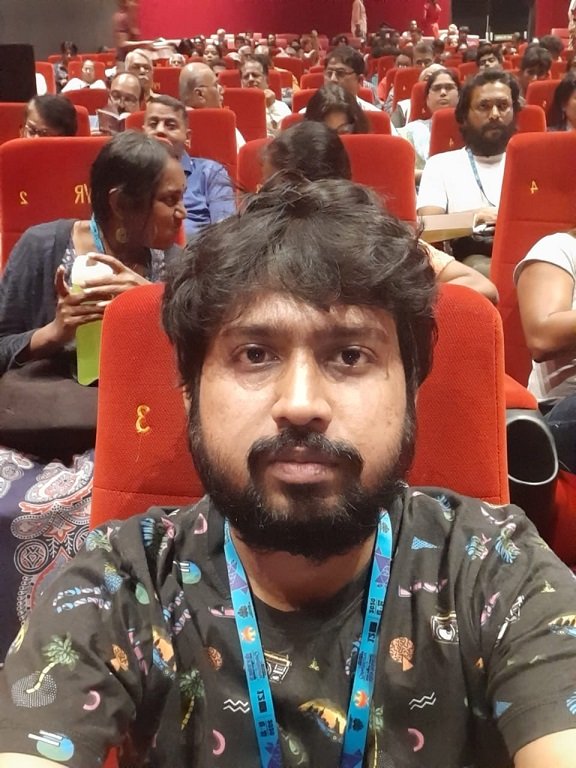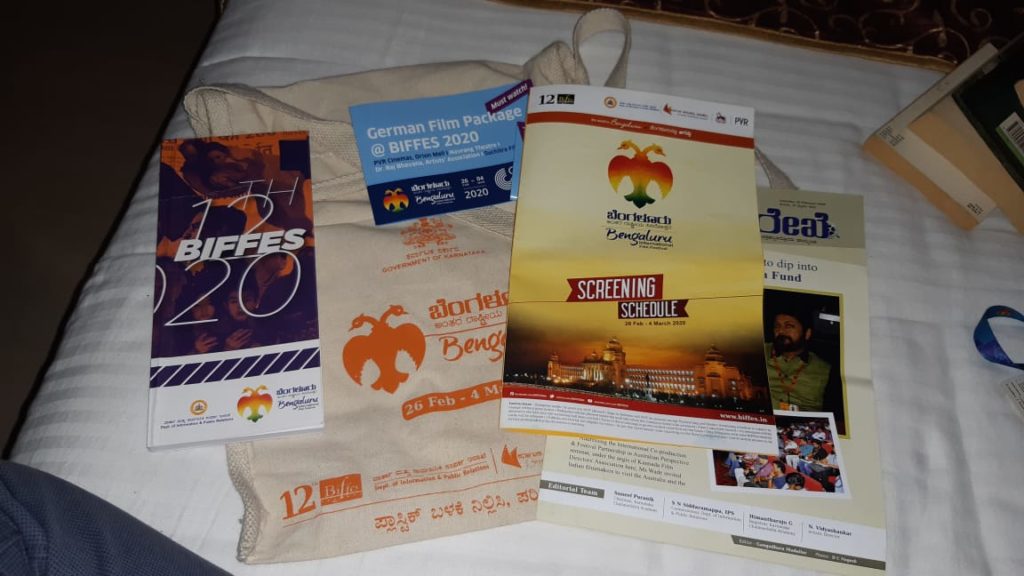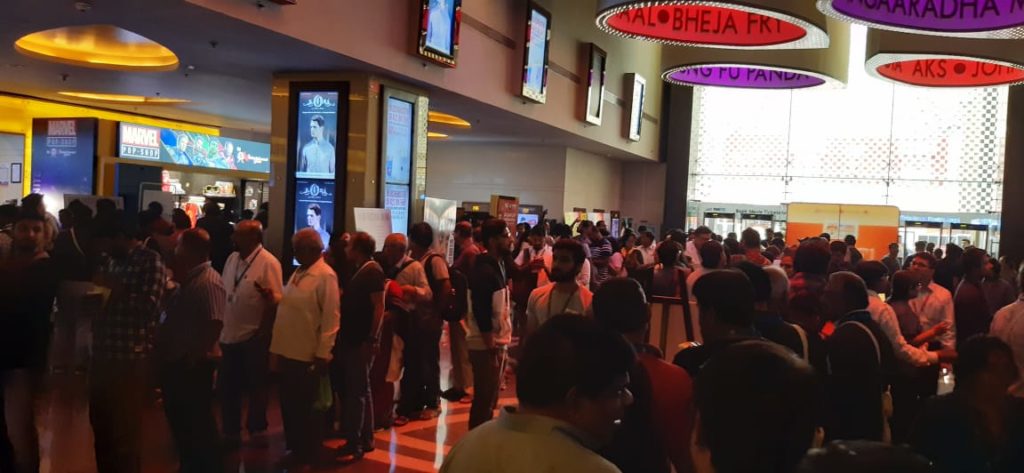Earlier in 2020 before the Covid-19 outbreak paralysed all my travel plans, I was fortunate to attend the 12th edition of the Bengaluru International Film Festival (BIFFES). I managed to attend the festival for two days and watch a total of five films. It was a fairly exciting experience for someone like me who – in my first solo trip – took a bus from Mumbai to Bengaluru just to attend the fest which is perhaps Karnataka’s biggest cinema extravaganza. Yes, I’m a film enthusiast. And this was an important trip for me because I was also in need of a break after a certain kind of failure in February.
It was my first time at the festival, so I thought I would take the free time during this lockdown to jot down some of my thoughts about BIFFES. Essentially, these might answer some of your questions if you plan to attend it in the following years. The biggest one being: is Bengaluru film festival worth going to? The short answer is yes.
My Experience at the Bengaluru Film Festival
The first day, after alighting at the Navrang Theatre junction, I walked to my hotel and checked in. I took a shower, and without grabbing breakfast, went straight to Orion Mall where PVR was hosting the film festival across 11 of its screens.
I observed the following things when I entered the film fest scene:
- You don’t have to book seats. Unlike the MAMI Mumbai Film Festival (MFF) – where you have to reserve your seats online on BookMyShow for each show – here your festival registration is sufficient. You follow the schedule for the day and directly enter or join the queue outside the hall where your chosen film is going to be screened. As simple as that. And because there is no seat reservation required, there is only one queue per auditorium
- Eleven screens in a single venue is like a dream come true in a film festival organisation.[1]Out of these, at the BIFFES, 2-3 are reserved for jury screenings. Much like how it is for the Cannes[2]The Cannes film festival takes place entirely at a single large venue – the Palace of Festivals and Conferences – which has a total area of 3,80,000 square feet containing, among other rooms and offices, 18 film screening auditoriums the largest of which (Auditorium Louis Lumière) can seat 2,300 people. (https://en.palaisdesfestivals.com/meeting-space-and-lay-out) it is one of BIFFES’ biggest advantage over MAMI MFF where venues are scattered across places that are 10-30 kilometres apart from each other. Here, I didn’t have to spend time travelling between venues, something that a lot of people complain about other film festivals in India like the IFFI in Goa (and something that I frequently observed at the EUFF in 2019). In the 12th edition, BIFFES also had three more venues: the legendary Navrang Theatre at Rajajinagar, Dr. Rajkumar Bhavana at Chamarajpet, and Suchitra Film Society (the farthest from South Bengaluru)
- The queues are bearable. Because I had planned my trip for the weekend, I was expecting huge crowds at the venue. Also since Orion Mall was the largest of the four venues, I was also expecting serpentine queues outside each screen. To my surprise, I found the queues much more bearable than how things are at other Indian film festivals. Even for popular films like Elia Suleiman’s It Must Be Heaven, I was able to get inside the hall despite joining the queue just 10 minutes before the show. (Of course, again, this is relative to Mumbai standards)

- Cafeteria food is affordable. PVR in Mumbai usually robs you and turns you half richer by the end of a film festival, but not in Bengaluru. And if the regular low prizes of food and confectioneries are not enough, the fest ran a 50% flat off on everything for festival delegates in its 12th edition. This was especially useful because Orion Mall – being the only major mall in South Bengaluru – was crowded on both the days I attended the festival. The food court? Even more so
- Each film is introduced in both Kannada and English before the screening. I liked this small feature which formally gave out a bit more information about the film being screened; its language and country of origin, director, and running time
- The crowd is more responsible. They maintained cinema theatre etiquette, and more importantly, didn’t remind me of my own imaginary theatre

- Post-screening Q&As are rare. This was disappointing to learn because one of the pros of attending a film festival is that you can meet and/or listen to a film’s cast and crew to get more insights about their creations. Out of the five films I caught, Q&A was suggested only for one film (Geetha J’s Run Kalyani) but a majority people walked out soon after the credits began to roll. So, it didn’t happen
- VIP culture is absent or restricted. This is another great feature of the Bengaluru film festival where all delegates are treated equally unless you are part of a film’s crew (which is fair). I was able to sit on any row that I wanted and no usher was present to tell me otherwise.
If you’re curious, I watched and reviewed the following five films:
- Psychobitch (dir. Martin Lund)
- Biriyaani (dir. Sajin Baabu)
- It Must Be Heaven (dir. Elia Suleiman)
- Run Kalyani (dir. Geetha J)
- Market (dir. Pradip Kurbah)
Here are some pictures that would further help summarise the film fest.

Delegates sitting engrossed in a hall for a houseful show 
Film enthusiasts waiting for their film to start 
My delegate kit 
Intro screen 
People waiting in line for their favourite films
Overall, I had a fun time at the 12th edition of the Bengaluru film festival. So much that I have plans to go back in 2021 provided travel restrictions ease by then. But before that, the question that comes to my mind is: will film festivals exist in this new normal? Screen has some guesses. TN.
Featured image courtesy: BIFFES via FB
Footnotes
